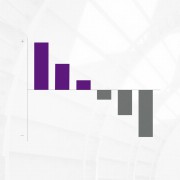Taxes
 60/40 Portfolio Simplicity
60/40 Portfolio Simplicity
See how a 60% stock/40% bond separate account portfolio can be an elegant solution for tax-sensitive investors.
 Top 5 Financial Advisor Questions About ETFs
Top 5 Financial Advisor Questions About ETFs
Natixis experts sum up ETF benefits and attributes from best execution, tax efficiency, and liquidity to the creation/redemption process and more.
 ETF Tax Efficiency
ETF Tax Efficiency
Explore ETF tax efficiency: Learn from a Natixis ETF Specialist about their tax-efficient investment advantages.
 Tax Management Update – 4Q 2023
Tax Management Update – 4Q 2023
Equity markets rose significantly in 2023, but periods of volatility still provided investors with opportunities for tax loss harvesting.
 The Difference a Day Makes: Leaping into 2024
The Difference a Day Makes: Leaping into 2024
Portfolio consultant offers insight into which tax and investment strategies need to happen before year-end – and others that need to wait for the new year.
 Tax Management Update – Q3 2023
Tax Management Update – Q3 2023
Although the S&P 500® is up over 13% year to date, the recent pullback has provided tax loss harvesting opportunities for direct indexing investors.
 Baby Steps: 3 Financial Planning Ideas for Expectant Parents
Baby Steps: 3 Financial Planning Ideas for Expectant Parents
Three wealth management ideas for getting your financial (rubber) ducks in a row before the sleepless nights begin.
 Is Direct Indexing Right for You?
Is Direct Indexing Right for You?
See how direct indexing compares to index funds and ETFs for investors who want to customize their accounts or minimize investment-related taxes.
 With Direct Indexing, Process Matters
With Direct Indexing, Process Matters
Kevin Maeda explains how process is a key differentiator between direct index providers, particularly for clients diversifying concentrated stock positions.
 How to Evaluate a Direct Index Provider
How to Evaluate a Direct Index Provider
See why choosing a direct index provider isn’t as straightforward as selecting a passive index fund or ETF, how strategies can differ, and why it matters.
 Asset Location Strategies
Asset Location Strategies
Smart tax planning starts with locating assets appropriately across taxable and tax-advantaged accounts to enhance after-tax returns.
 Generate Better After-Tax Returns with Direct Indexing
Generate Better After-Tax Returns with Direct Indexing
Learn why direct indexing with a separately managed account (SMA) is more tax-efficient than an index fund or ETF.
 Direct Indexing Solutions for Tax-Efficient Diversification
Direct Indexing Solutions for Tax-Efficient Diversification
Learn how a direct indexing strategy can help control the tax impact of diversifying a concentrated stock position.
 Tax-Efficient Portfolio Transitions Using Direct Indexing
Tax-Efficient Portfolio Transitions Using Direct Indexing
Discover how direct indexing can help minimize the tax consequences of transitioning portfolio assets to a new account.
 Create Customized Portfolios Using Direct Indexing
Create Customized Portfolios Using Direct Indexing
See how index portfolios can be customized for ESG (environmental, social, and governance) or strategic investment goals using active screening techniques.



